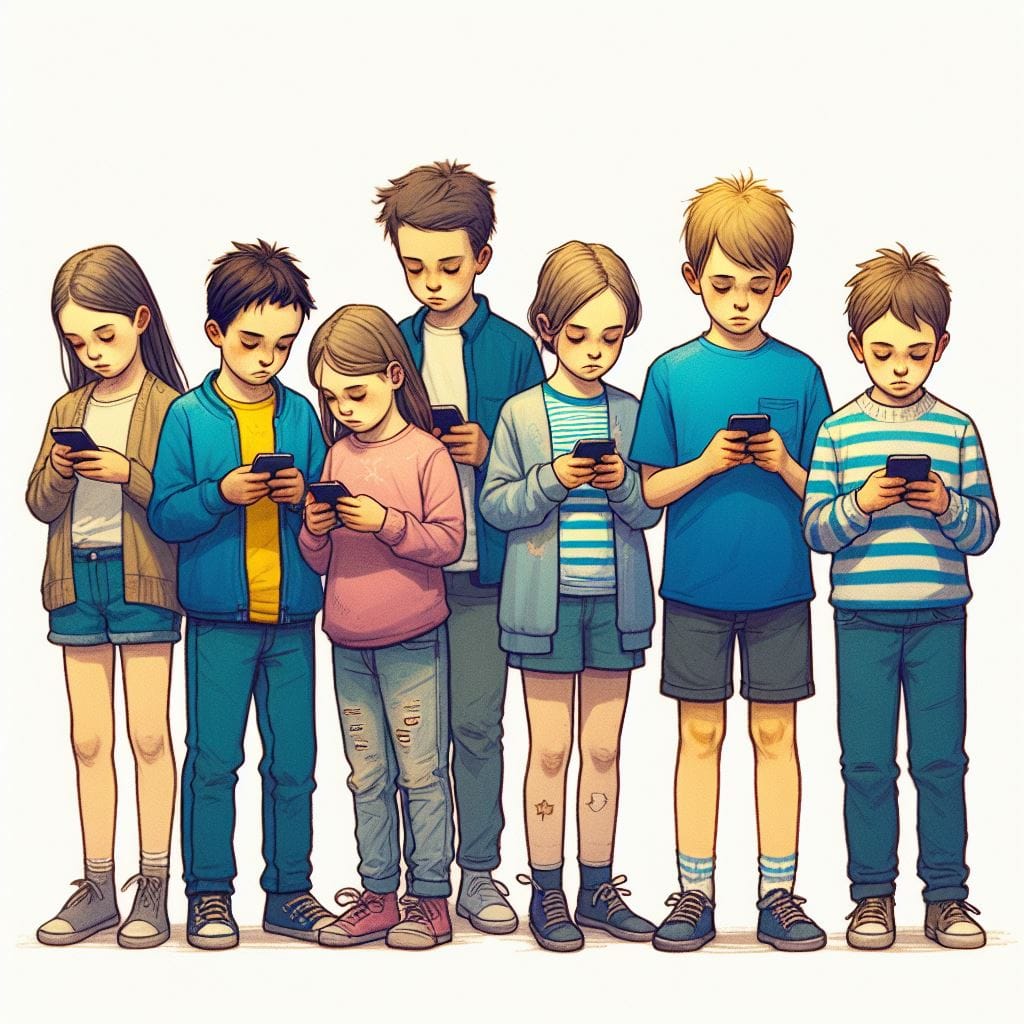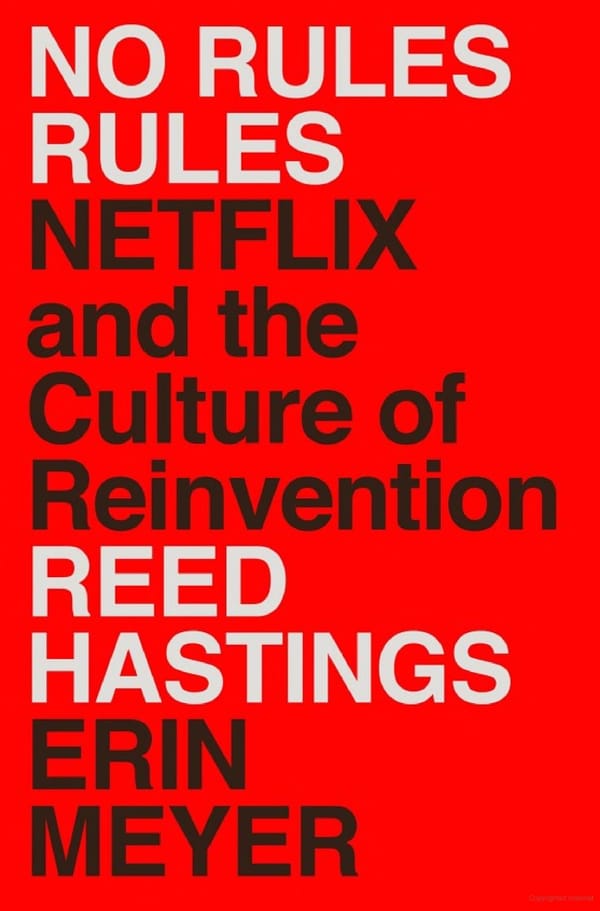Adverse Optimization: The Anxious Generation
The advent of the smartphone has a huge impact on development for kids. In this post, I argue that it’s “adverse optimization” that is causing the disproportionate harm. I am less certain on the best way forward at the individual and societal level, and outline some contours of the debate.

The advent of the smartphone has a huge impact on development for kids. In this post, I argue that it’s “adverse optimization” that is causing the disproportionate harm. I am less certain on the best way forward at the individual and societal level, and outline some contours of the debate.
Adverse Selection
Before we get to adverse optimization, I want to first talk about its parent idea of adverse selection.
My favorite introduction to this idea was the 1970 paper by Akerlof, called The Market For Lemons (wiki). In this paper, Akerlof demonstrates why the used car market will devolve: due to asymmetric information the market selects against high quality products. In the simple thought experiment, there are two types of used cars: good ones (peaches) and bad ones (lemons). If buyers are only willing to pay a fixed price, sellers will disproportionately sell lemons (as they are less valuable). The result is that the used car market collapses to only contain lemons and the normal market, absent any reputational systems, will not be there for peaches.
In general, when there is uneven information in a market, adverse selection can arise. In health insurance, this happens when only the sick seek insurance which leads to higher costs of insuring that group, per person. This causes the insurance company to raise premiums, which then means only consumers who are really sick would continue to buy it. And so on, until the market collapses. This is why health insurance tends to devolve to single-payer or employer-based to reduce the impact of adverse selection. You could imagine a similar mechanism in those who would seek loans (hence the advent of credit scores).
Adverse Optimization
Now suppose the dealer has even more information about you. The dealer actually knows your individual willingness to pay and your ability to detect a lemon. In this case, they could actually optimize against you by understanding when you’re most likely to overpay and selling you that exact car. This is a transfer of value from away from you and is personalized to you specifically.
By now you may be starting to get a sense of where this is going. Before I get more specific, I would argue that adverse optimization occurs when:
- There is an informational discrepancy between two parties
- There is an ability to optimize the transfer of value based on this information disparity
- This can happen accidentally or indirectly (via a proxy metric) but still involves a transfer of value away from one party
- The outcome is worse than if all parties had full information
After reading Jonathan Haidt’s book The Anxious Generation, I attribute at least some of the shift in societal mental health outcomes are due to adverse optimization against Gen Z. And this is happening through the smartphone, especially social media and algorithmic engagement. Haidt suggests:
In fact, smartphones and other digital devices bring so many interesting experiences to children and adolescents that they cause a serious problem: They reduce interest in all non-screen-based forms of experience.
Something seems to have seriously and negatively impacted Gen Z.
The Anxious Generation
The book outlines several large shifts that indicate a significant decrease in wellbeing for the youngest cohort in society.
First, on the topic of major depression, the rates seem to have climbed substantially in the past decade. Keep in mind, this is far from universal–adverse optimization isn’t expected to be uniformly effective. There’s likely a subset of us who are disproportionately vulnerable. That said, the following charts are extremely alarming.
If you are concerned that these numbers may just reflect shifts in sensitivity of surveys, Haidt has thought about this contingency as well. In ER visits:
There’s one more dimension of this concerning boys, which featured less prominently in The Anxious Generation and was discussed in The Economist:
Boys have always been a bit behind girls academically, but at the societal level this gap is widening. There’s a disproportionate “failure to launch.”
Something is going wrong. Our youngest are finding much worse outcomes than previous generations. As a parent with young kids, these shifts in base rates are absolutely terrifying. The mental model should be similar to hazard ratios from Outlive. While there’s no guarantee that my kids will feel this (and still a majority of kids are “fine”), one of the highest value-add things for me to do is to try to understand the causes and reduce the hazard ratio.
Why is this happening?
This also happens to be the primary subject of Haidt’s book, for which there is some controversy, especially about the causes. I include some links in the appendix, but a quick google search will show much more about the active discussion happening online, even today.
That discussion is incredibly helpful and maybe our understanding will evolve by the time I need to do anything specific concerning smartphones. In the meantime, I will try to use the rest of this post to synthesize my understanding and what I think the steps forward are today.
First is that the smartphone (and social media) are able to adversely optimize against our kids. Roughly, I think these are the principles involved:
- The developing brain (especially in puberty) with its accelerated myelination means that it's uniquely susceptible to outside influence. Developmentally, this is also when kids are trying to detach from their parents and find their own identity. The frontal cortex doesn’t fully mature until your 20s, which is a very important part of learning self control. In this phase of development, Haidt argues that “Social media platforms are therefore the most efficient conformity engines ever invented. [Kids] detect prestige and then copy the prestigious.”
- The smartphone is extremely addictive. By personalizing algorithmic feeds and studying what pattern of (notification, reward) generates the most engagement, we are optimizing in the interest of the time spent on the app. Increasing engagement means making the app more addictive. Many companies have figured out ways to utilize habit-building mechanisms to do so. By personalizing, the algorithms are optimizing against your nascent defenses. A similar pattern exists in many video games, where psychologists are brought in to optimize reward systems to give people a sense of achievement.
- Kids are antifragile. They need to experience hardship (and boredom) in order to fully reach their potential. Smartphones shortcut this too, by acting as “experience blockers.” However, no one is designing an app to do that because such an app wouldn’t be all that popular. There are some screen time and wellbeing tools which can help in this regard.
- There’s a large knowledge discrepancy. Parents and kids do not know the long term effects of any single decision today. It would be my guess that companies can predict user retention far better than any individual, and they can do this in part by optimizing engagement levers. Sometimes you hear the phrase “the algorithm knows me better than I know myself.”
Haidt’s thesis is similar:
My central claim in this book is that these two trends—overprotection in the real world and underprotection in the virtual world—are the major reasons why children born after 1995 became the anxious generation.
From this, The Anxious Generation highlights 4 foundational harms that come from smartphone overuse:
- Social deprivation – evidence that face-to-face interactions seems to have been substituted by smartphones. I also see this in younger people being less willing to do any form of communication except text.
- Sleep deprivation – perhaps the least convincing in terms of direct smartphone attribution. That said, screens (especially blue light) in the bedroom do decrease sleep quality and I believe smartphones are not helpful in this regard.
- Attention fragmentation – this one really resonates with me. I’ve found that sometimes the best productivity advice I can give to a member of Gen Z is to disable all your notifications on your phone. The reason Cal Newport’s book Deep Work is so valuable is because the ability to focus has become relatively scarce.
- Addiction – it’s real. On a sadder note, we’ve seen families out at dinner where no words are exchanged and everyone (parents, older children) literally just stare at their smartphone for the entire meal. Presumably they went to dinner together to spend time as a family.
Deprivation and addiction cause compensatory behaviors. Often these take the form of more smartphone usage. These combine to make it very hard to fight against, especially for members of society who do not have fully formed prefrontal cortices.
What can we do?
I consider myself lucky in a few ways when thinking about adverse optimization. I don’t seem to care as much as others about social media and this could be related to the fact that I did not get a smart phone until I was 25. I also found myself generally getting quite bored of video games after enough time. Haidt recognizes this:
Millennial adolescents in the 1990s and early 2000s had access to all kinds of addictive activities on their home computers, and some of them did get addicted. But they couldn’t take their computers with them everywhere they went. After the Great Rewiring, the next generation of adolescents could, and did.
Practically, I actively mute notifications on my phone for every single app and I avoid almost any algorithmic feed (I still waste some time on google news, but only from my desktop). For kids, here’s a framework from the book and my thoughts. Keep in mind that these best practices will probably evolve as society changes and as we learn more, including in this debate about smartphones.
First, we should aim for age-appropriate levels of independence. Keep in mind that you should be adaptable but in general try for increasing levels of autonomy:
- Age 6: The age of family responsibility. Chores and other contributions to the family are critical.
- Age 8: The age of local freedom. This sounds scary, but allow your kids to wander the neighborhood (with a bike to friends?). This one feels unintuitive, but perhaps I’ve become too conformist?
- Age 10: The age of roaming. More freedom. By this age I was going to and from summer camp on my own (around a 1 mile walk), with no adults at home until later on some days. Maybe it was a different time then, but this freedom was good for my development.
- Age 12: The age of apprenticeship. Something that contributes to society, in some way.
- Age 14: The beginning of high school.
- Age 16: The beginning of internet adulthood. This is later than what I think commonly happens now.
Second, we try to make screen time somewhat boring (or at least not continually very engaging). We don’t always succeed, but we disproportionately have our kids watch documentaries instead of more compelling online fare. It’s actually a win for us when they lose interest in the tv and start reading or playing instead. For any kind of video game, we make sure it has a large learning and planning component (this rules out just about all “real time” games). Until the prefrontal cortex is ready to handle these types of experiences responsibly, I think it makes sense to limit exposure.
Third, we aim to be gardeners and not carpenters. Instead of “concerted cultivation” we aim to encourage discovery of hobbies and the freedom to follow interests. We’re still converging on what the right level of commitment is to a given activity, but there’s definitely a partnership rather than a dictatorial approach.
Lastly, we try to keep an eye out for any problematic use. This could apply to video games, TV, or any other activity that seems to be ruling our children rather than bringing them joy. We try to catch it early and suffer the disappointment while it’s still mild.
As they get older, we will likely try to delay the introduction of the smartphone as long as possible. I may need to repeatedly discuss the challenges of having algorithmic feeds playing a role in your life. Since kids always find a way around parental controls, we will do what we can to inoculate their values and find positive outlets for distress.
There’s always a benefit in adding friction to undesired habits, which is something parents can do to help shape the environment. At some point though, we have to rely on them to make good decisions and trust in themselves. By giving them age-appropriate freedom, we hope to set them up well.
To end on an optimistic note, I want to highlight what the internet and smartphone have enabled. It’s easier than ever to gain expertise and become world-class in a field of your interest. It’s also easier than ever to form a community around that interest. To best utilize this opportunity, we need to avoid all of the traps along the way. That is, we need to take control of the objective function and make it work for us–for beneficial optimization.
Additional resources
- https://www.platformer.news/anxious-generation-jonathan-haidt-debate-critique/
- https://www.slowboring.com/p/smartphones-in-schools-are-bad
- https://conversationswithtyler.com/episodes/jonathan-haidt-anxious-generation/
- https://www.afterbabel.com/
- https://letgrow.org/program/the-let-grow-project/
- The smartphone as endless fantasy? A haunting video on what could be happening.
Appendix
There’s an aside on predatory behavior by older men targeting younger girls, especially on Instagram and Snapchat. It’s very clearly a harm to worry about, especially if you have a daughter around this age. From The Anxious Generation:
Girls on social media platforms such as Instagram and Snapchat are exposed to the direct messages of adult men who seek them out, and also to school cultures in which photos of their naked bodies become a currency for social prestige among boys, a currency that girls pay for with shame. Sexual predation and rampant sexualization mean that girls and young women must be warier, online, than most boys and young men. They are forced to spend more of their virtual lives in defend mode, which may be part of the reason that their anxiety levels went up more sharply in the early 2010s.
Age-specific suggestions from The Anxious Generation–the book has more but these were what jumped out to me. There’s also a section for older kids, but I’m not in a position to evaluate it so I left it out of this appendix. If you want to learn more, I encourage you to pick up the book.
- For Parents of Young Children (Ages 0 to 5)
- But what you do often matters far more than what you say, so watch your own phone habits. Be a good role model who is not giving continuous partial attention to both the phone and the child.
- Also, trust young children’s deep desire to help out. Even at age 2 or 3, children can put the forks on the place mats or help load the washing machine.
- Until 18 months of age, limit screen use to video chatting along with an adult (for example, with a parent who is out of town). Between 18 and 24 months, screen time should be limited to watching educational programming with a caregiver.
- For children 2–5, limit noneducational screen time to about one hour per weekday and 3 hours on the weekend days.
- Avoid using screens as pacifiers, babysitters, or to stop tantrums.
- For Parents of Children Ages 6–13 (Elementary and Middle School)
- Practice letting your kids out of your sight without them having a way to reach you. While you cook dinner for your friends, send your kids out with theirs to the grocery store to pick up more garlic (even if you don’t need it). It is only by letting your kids out of your sight, untethered, that you will come to see that this is doable, and rather great.
- Encourage sleepovers, and don’t micromanage them, although if the friend brings a phone, hold on to it until the friend leaves, otherwise they’ll have a phone-based sleepover.
- Encourage walking to school in a group. This can begin as early as first grade if the walk is easy and there is an older child to be responsible.
- After school is for free play. Try not to fill up most afternoons with adult-supervised “enrichment” activities. Find ways that your children can just hang out with other children such as joining a Play Club (see chapter 11), or going to each other’s homes after school. Friday is a particularly good day for free play because children can then make plans to meet up over the weekend.
- Go camping. At campgrounds, kids are usually way more free range than at home, for a few reasons. First, they are away from their scheduled activities. Second, they’re living in a small space with their parents—the outdoors beckons! Third, kids at campsites are expected to run around with the other kids.
- Find a sleepaway camp with no devices and no safetyism. Many summer camps offer children and adolescents the chance to be out in nature and away from their devices and the internet for a month or two.
- Avoid camps that are essentially summer school, with academic work and internet access, or camps that do not provide children with any communal responsibilities.
- Form child-friendly neighborhoods and playborhoods. Even if your neighborhood feels empty today, that doesn’t mean it has to stay that way.



